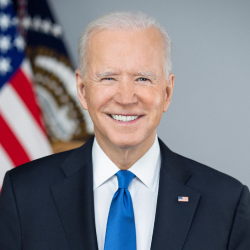
Cultivated meat media kit
Cultivated meat can transform our global food system. Get the latest updates on this game-changing alternative to conventionally produced meat.

Get the latest news on cultivated meat
The basics
Cultivated meat is a game-changing alternative to conventionally produced meat that offers the potential to make meat in a healthier, safer, and more sustainable way. Cultivated meat is essentially the same as the beef, pork, chicken, and fish we eat today, but grown directly from animal cells, without the need for antibiotics, hormones, and steroids.
By producing meat in this way, we can satisfy growing global demand for protein while reducing pressure on our planet and enhancing food security. When produced at scale using renewable energy, cultivated meat is projected to generate a fraction of the emissions and require a fraction of the land and water that conventional meat production does.
In November 2022, the U.S. Food and Drug Administration (USDA) became the second regulatory agency worldwide to greenlight a cultivated meat product, setting out a clear path to market in the U.S. for cultivated meat companies under a transparent regulatory process. This historic news follows the Singapore Food Agency’s world-first approval of a cultivated meat product in late 2020.
In June 2023, two American companies – UPSIDE Foods and GOOD Meat – received landmark grants of inspection from the U.S. Department of Agriculture (USDA), allowing them to sell their cultivated chicken products in the United States. This regulatory breakthrough means Americans are closer than ever before to purchasing cultivated meat.
Nomenclature consensus
Following multiple consumer studies and corporate surveys, industry consensus has landed on cultivated as the preferred term for meat grown directly from the cell.
New research conducted in December 2022 by Embold Research and commissioned by GFI demonstrates consumer preferences for using “cultivated meat” over other terms such as “cultured,” “lab-grown,” and “cell-based.” These findings mirror the results of two other studies: a 2019 GFI-commissioned Mattson study, and a 2020 Rutgers seafood study commissioned by BlueNalu. Both studies found “cultivated” to be consumers’ preferred term.

Globally, cultivated meat companies and key industry stakeholders have aligned on “cultivated.” Just last month, 30 key industry stakeholders across Asia—from companies to regional coalition groups, and government initiatives—adopted “cultivated” as the preferred English-language descriptor for all food products grown directly from animal cells.

Cultivated meat visual library
Our cultivated meat image library presents an ever-increasing selection of cultivated meat images available for use under Creative Commons licenses. Check out photos from Avant Meats, New Age Meats, Shiok Meats, Wild Type, BlueNalu, and more!
Cultivated meat FAQs
Read responses to some of the most frequently asked questions relating to cultivated meat.
What is cultivated meat?
Cultivated meat is essentially the same as the beef, pork, chicken, and fish we eat today but grown directly from animal cells, without the need for antibiotics, hormones, and steroids.
Cultivated meat is projected to generate a fraction of the emissions and require a fraction of the land and water of conventional meat production. When produced at scale using renewable energy, cultivated meat can cut emissions by 92 percent, and use up to 95 percent less land and 78 percent less water than conventional beef.
How does cultivated meat compare?
On taste: Cultivated meat has the same smell, texture, and consistency as the meat consumers enjoy today. It will also taste the same or better than conventional meat—given the production methods, it could have a purer taste and stay fresher longer.
On health: Produced in a clean and controlled environment, cultivated meat doesn’t require the antibiotics, hormones, and steroids that can be a concern for conventional meat. It is free of contaminants and foodborne pathogens.
On the planet: Cultivating meat is more efficient than conventional production. When produced at commercial scale using renewable energy, meat made in this way could produce up to 92 percent less emissions, and use up to 95 percent less land and 78 percent less water when compared to conventional beef production.
Is cultivated meat safe?
In the U.S., the Food and Drug Administration is responsible for ensuring the safety of foods available in the U.S. market and, together with the USDA, will regulate the sale of cultivated meat.
Each cultivated meat product will be assessed by the FDA as part of a rigorous pre-market safety review. Cultivated meat companies must then follow the same processes that conventional meat companies must follow to ensure safe product production and handling.
The clean and controlled environment in which cultivated meat is produced will offer numerous advantages for product safety, including the elimination of contaminants and foodborne pathogens, as well as antibiotics and other additives.
Can cultivated meat improve public health?
Cultivated meat can be made without the antibiotics, steroids, and other additives that can be a concern for conventional meat. This means that cultivated meat will not contribute to antibiotic resistance. Read our blog post and Nature Food article for more on cultivated meat and antibiotics.
Cultivated meat is produced in facilities with cleaner conditions than conventional meat processing facilities. This reduces the risk of both foodborne illnesses and other diseases transmitted by animals, reducing the risk of future pandemics. According to the CDC, three out of four new or emerging infectious diseases in humans come from animals.
When and where can we buy it?
Commercial sales of a cultivated meat product were first approved in Singapore in late 2020, where such products continue to appear on select restaurant menus.
As of June 2023, two California-based companies – UPSIDE Foods and GOOD Meat – have received regulatory approval from the USDA to sell their cultivated chicken products in the U.S. Both companies previously received the greenlight from FDA, in November 2022 and February 2023, respectively. Learn more about the U.S. regulatory pathway for cultivated meat.
Using Singapore as an example, cultivated meat will make its U.S. debut in restaurants before the product is more widely produced and available in retail outlets. UPSIDE has partnered with chef Dominique Crenn to start serving the company’s cultivated chicken at her San Francisco restaurant, Atelier Crenn. GOOD Meat is partnering with celebrity chef José Andrés to start serving their cultivated chicken at his Washington D.C. restaurant China Chilcano.
Words of support
From high-level government reports and directives to statements from leaders in industry and business, cultivated meat has been recognized as a powerful solution for creating a more resilient food system.

“The world is experiencing a food revolution and the FDA is committed to supporting innovation in the food supply. As an example of that commitment, today we are announcing that we have completed our first pre-market consultation of a human food made from cultured animal cells.”
FDA Commissioner Robert Califf and director of the Center for Food Safety and Applied Nutrition Susan Mayne in a press statement on November 16, 2022.
In his September 2022 executive order, U.S. President Joe Biden demanded action on “cultivating alternative food sources,” including cultivated meat and fermentation.
U.S. President Joe Biden in his Executive Order on September 12, 2022
The order acknowledged the promise of “cultivating alternative food sources” and “looking to improve food security and drive agricultural innovation through new technologies…[including] foods made with cultured animal cells.”


“We’re going to see these technologies go to places around the world that are more conducive to their development, and frankly China may be one of those.”
Former Secretary of Agriculture Sonny Perdue in a virtual fireside chat hosted by BIO in 2020 and in a 2018 interview with Organic Insider.
“We’ve got new technology with stem cell protein growth there. While some people may be anxious about taking their markets, shouldn’t we in the United States be about how we can grow and feed people more efficiently and more effectively … these techniques need to be embraced, not kept out of.”
The Intergovernmental Panel on Climate Change’s (IPCC) Sixth Assessment Report
The IPCC’s Sixth Assessment Report released in April, 2022, where the world’s top scientists name cultivated meat and other alternative proteins as transformative solutions which can play a critical role in halving global emissions by 2030. It states:
- Emerging food technologies such as precision fermentation, cultivated meat, and plant-based foods can “promise substantial reductions in direct greenhouse gas emissions from food production” (TS. 5.6.2).
- Citing a paper co-authored by GFI Israel senior scientist Tom Ben-Arye, the report acknowledges that, while in its infancy and reliant on increased investments, innovation, and regulatory approval, cultivated meat offers a more sustainable alternative to current livestock production systems and agricultural land use (7.3.3).
- As well as reducing emissions, sustainable proteins like cultivated meat “lower land, water, and nutrient footprints, and address concerns over animal welfare” (TS. 5.6.2).

Breakthrough Energy’s Federal Climate Policy Playbook
This resource includes policy recommendations for cultivated meat and other alternative proteins as a critical component of reaching net-zero emissions. It states:
“The federal government should invest in robust R&D to further explore innovations such as (…) cellular agriculture, including stable cell lines, optimized cell culture media for growing meat, novel methods of scaffolding support for muscle and fat cell growth, and improved bioreactor designs.”

Cultivated meat in the news
Read coverage by the world’s leading media outlets, who have followed on as the field of cultivated meat has evolved and grown.
Industry resources
Read these related resources to learn more about the burgeoning field of cultivated meat.
Are you working on a story?
Access our full selection of media resources, including reports, data, and insights from the world of alternative proteins.


Get the latest updates
Access our latest media statements on breaking cultivated meat news and other alternative protein developments.
Page
Newsletters
Our newsletters offer timely insights and expertly-curated resources on the alternative protein industry. Subscribe today to stay in the know.

Support our work
Our alternative protein research, insights, and advocacy are made possible thanks to our generous, global family of donors. Philanthropic support is vital to our mission. Connect with us today to discuss how you can help fuel this transformative work.
The featured image showing cultivated chicken is courtesy of GOOD Meat






























